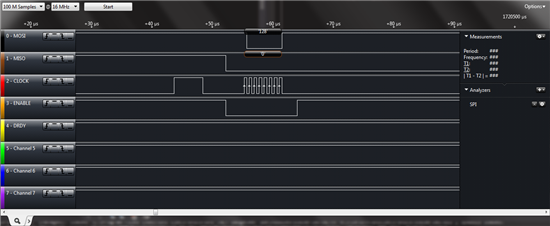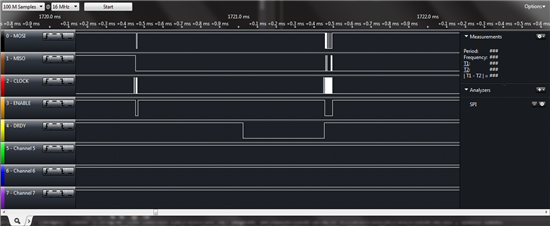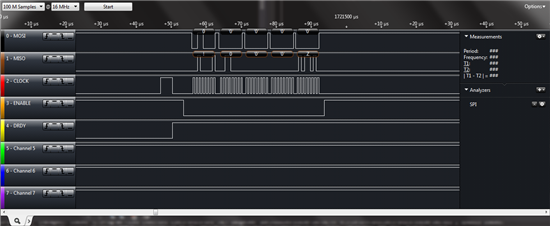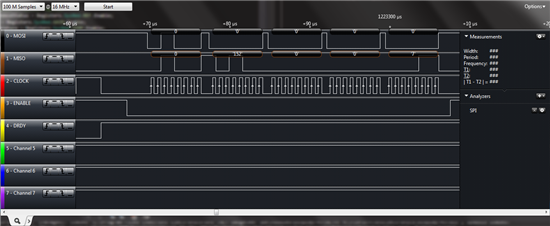Hello,
I have a very strange experience with ADS1258. I can communicate with it when it is connected to the MMB0. In this config the MMB0 USB and Power supply inputs are not connected. I supply power to the EVM through J5A pins.
Here is my connection configuration:
J5.3 - 5V
J5.5 - GND
J5.9 - 3.3V
J5.6 - J6.4
---
J6.3 - SPI Clock
J6.4 - J5.6
J6.7 - SPI Chip Select (Device)
J6.8 (Clock Select) - J6.18
J6.11 - (Device MOSI)
J6.13 - (Device MISO)
J6.15 - Device Digital Input
No any other connection made.
In this case the MMB0 3 leds are on and more or less the communication is stable.
For communication I am using Pulse Convert command and polling the DRDY pin for going low then using the Register Data Read command the get the data. With this configuration I can successfully communicate with the ADS1258EVM. (SPI Clock rate is 1,2 MHz.) Sometimes the StatusByte.NewBit is not 1 - thats why I say more or less. I think its ok.
I wanted to remove the MMB0 and use only the EVM itself but somehow I SPI communication goes wrong. When I am trying to read the OFFSET value for example the StatusByte.ChannelID never returns the right ID. Lets call this error ChannelIDMissmatch. Well I decided to use a logic analyzer from SALEAE to see whats going on.
And here is my experimental result:
Register Type: ADC.Registers.SysRed Value: 0x3D Default Value: 0x00 Register Type: ADC.Registers.MuxSg0 Value: 0x00 Default Value: 0xFF Register Type: ADC.MuxSg1 Value: 0x00 Default Value: 0xFF Register Type: ADC.MuxDif Value: 0x00 Default Value: 0x00
As you can see, the registers are configured to read only internal values.
Sending out the PulseConvertCommand:
The entire communication: with DRDY
and Only the response with Wrong ChannelID Response:
As you can see the '!' and Z indicates invalid data...
I have reconnected the MMB0 and made another trial. Here is the result with the good outcome.
The value 152 equals to the value read from the ADS.
I am hoping someone can explain what is going on here :) and what should I do to use only the EVM.
Thank you in advance.





